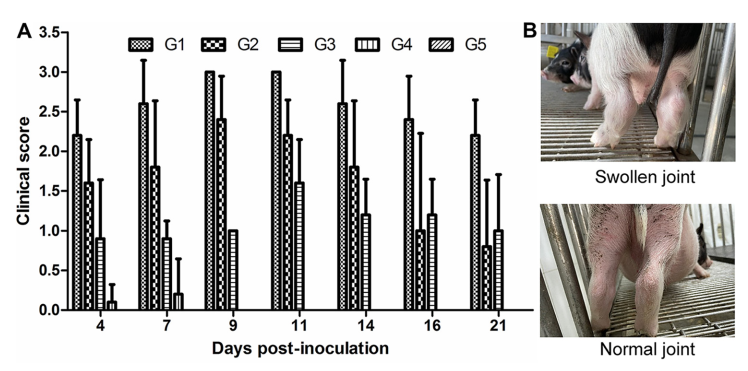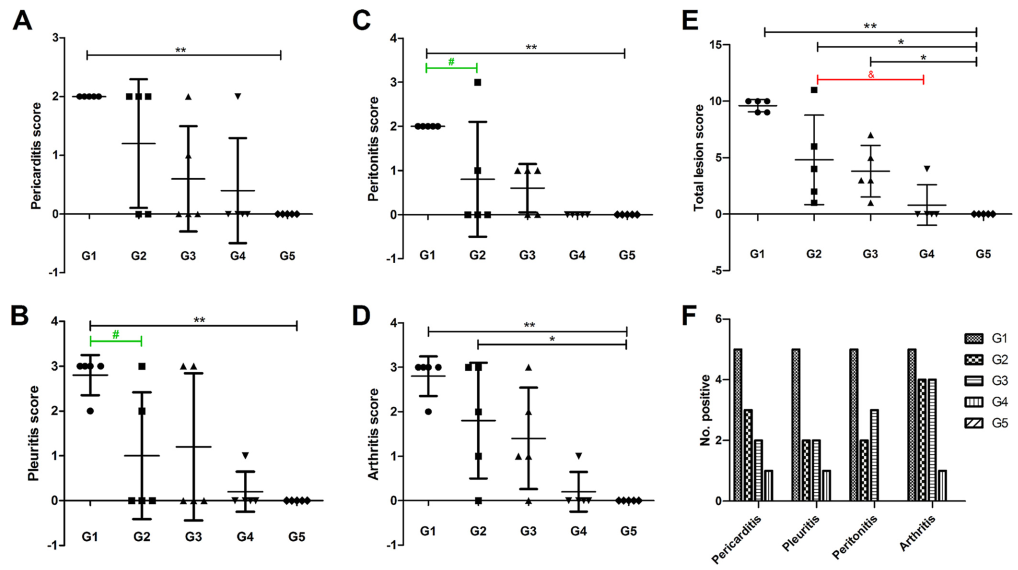
Mycoplasma hyorhinis is a widespread pathogen in pig farms worldwide. Although a majority of M. hyorhinis-colonized pigs have no apparent clinical disease, it could induce diseases, such as polyserositis, arthritis, and eustachitis in some cases. To explore the mechanism for the occurrence of the diseases, we challenged 4 groups of Bama miniature pigs with M. hyorhinis isolated from pigs with no clinical symptoms (non-clinical origin (NCO) strain) or with typical clinical symptoms (clinical origin (CO) strain) and investigated the impact of the different strains and inoculation routes (intranasal (IN), intravenous (IV)+intraperitoneal (IP), and IV+IP+IN) on disease induction. Another group of pigs was set as negative control. The pigs inoculated with the CO strain through a combined intravenous and intraperitoneal (IV+IP) route showed a significant decrease in average daily weight gain (ADWG), serious joint swelling, and lameness, compared with the pigs in the negative control group. Furthermore, this group developed moderate-to-severe pericarditis, pleuritis, peritonitis, and arthritis, and high levels of IgG and IgM antibodies. Pigs inoculated (IV+IP) with the NCO strain developed less marked clinical, pathological changes and weaker specific antibody response, compared with the pigs inoculated with the CO strain. The challenging results of the NCO strain via different routes (IV+IP, IV+IP+IN, and IN) indicated that the combined route (IV+IP) induced the most serious disease compared to the other inoculation routes. Intranasal inoculation induced a smaller decrease in ADWG without obvious polyserositis or arthritis. These data suggest that both the differences in strain virulence and inoculation route affect the consequences of M. hyorhinis infection.

Figure 1. Clinical evaluation of arthritis. A. Pigs were monitored and scored regularly after infection for joint swelling, lameness and movement difficulties. B. Images of severely swollen joints (G1 group) and normal joints (G5 group).

Figure 2. Polyserositis and arthritis lesion scores of the infected pigs.
Read more: https://doi.org/10.1128/spectrum.02493-21


